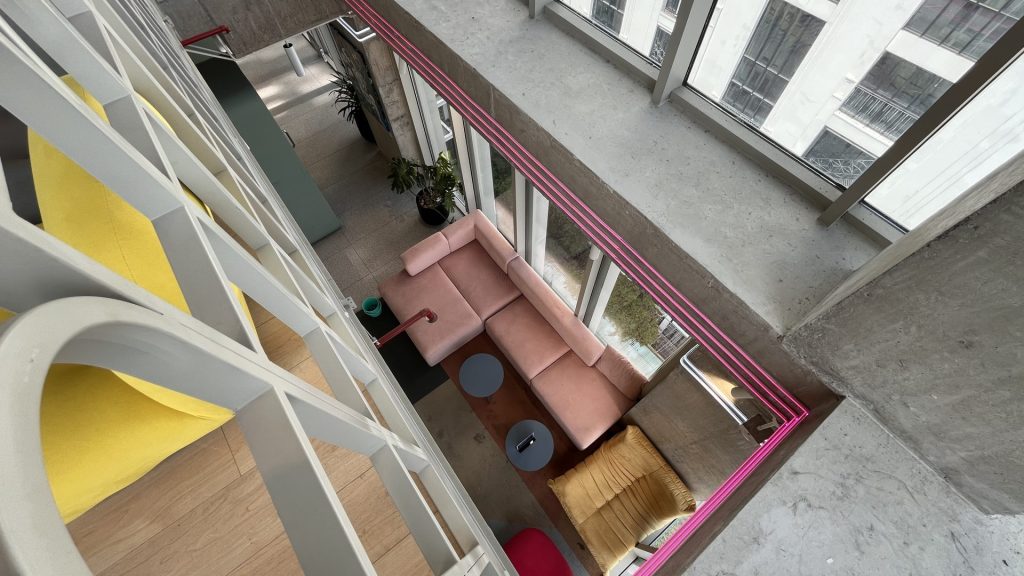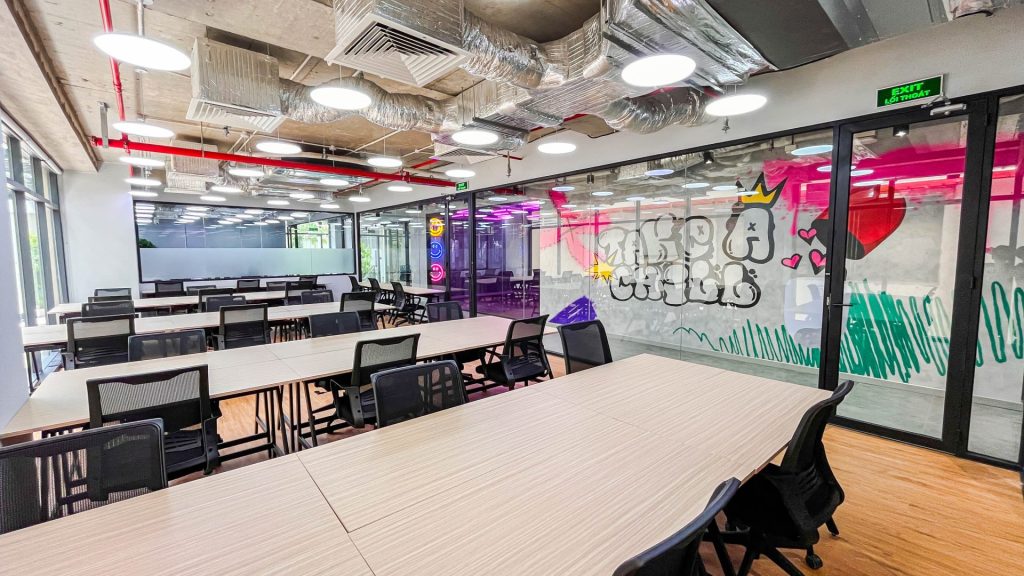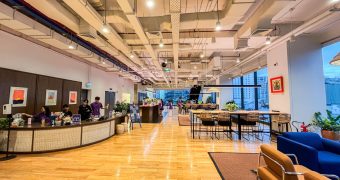Modern Office Design Principles That Make Coworking Spaces Feel Like Home
Coworking spaces have transformed the modern workplace, offering flexible and collaborative environments for freelancers, remote workers, and small businesses. With 45% of businesses planning to downsize by 2025 and the number of landlord-fitted coworking spaces doubling in 2022, the demand for these shared workspaces is surging.
As hybrid work models become the norm, creating coworking spaces that feel like a second home is essential for attracting and retaining users. Modern office design plays a pivotal role in achieving this, blending functionality with comfort to create welcoming, productive environments.
Comfort and Ergonomics
True comfort is the bedrock upon which a homely coworking space is built, and it starts with the fundamentals of ergonomic furniture. Investing in high-quality ergonomic chairs that support the spine and adjustable desks that allow users to alternate between sitting and standing is crucial. This focus on ergonomics directly addresses physical well-being, significantly reducing the risk of strain, fatigue, or injury that can arise from spending long hours working.
Beyond the primary workstation, comfort extends to incorporating soft seating options. Think plush couches, comfortable armchairs, informal beanbags, and dedicated lounge areas. These zones serve multiple purposes:
- Providing relaxed settings for taking breaks.
- Facilitating informal catch-ups or brainstorming sessions.
- Offering alternative postures for focused work or reading.
Much like a well-appointed living room invites relaxation and conversation, these softer zones within a coworking space encourage users to unwind, recharge, and connect, all while remaining within a productive environment.
By prioritizing both task-oriented ergonomic support and relaxed seating, coworking spaces demonstrate a commitment to user well-being, making the environment feel inherently accommodating, supportive, and user-friendly.
Warmth and Ambiance
Creating a cozy, welcoming office that feels more like home starts with the atmosphere. Lighting, color, and materials play a big part in setting the tone. The goal is to move away from the cold, sterile look of traditional offices and create a space that people actually enjoy spending time in.
- Lighting: Harsh fluorescent lighting is out. Warmer, softer lights create a much more relaxed environment. Using a mix of ambient, task, and accent lighting adds depth and makes the space feel layered and comfortable. Natural light is equally important. Studies show that almost half of employees feel tired in spaces without enough sunlight. Large windows and smart layout choices help natural light reach deeper into the room, boosting mood and focus.
- Color and Materials: Office color schemes are shifting. Instead of flat white or gray, warm earth tones, muted greens, and soft blues create a sense of calm. Natural materials like wood, stone, and textured fabrics bring in a grounded, human touch. These elements help the space feel more familiar, less rigid, and more like somewhere you’d want to be.
- Biophilic Design: Bringing nature indoors is one of the most effective ways to make an office feel inviting. This idea, known as biophilic design, includes:
- Indoor plants and potted trees
- Living green walls
- Water features (where appropriate)
- Views of nature or outdoor spaces
These natural elements do more than improve aesthetics. They’ve been shown to reduce stress, improve mood, and support better thinking. They help the workspace feel fresh, vibrant, and more connected to life outside the walls.
Personalization and Flexibility
One of the best things about being at home is having control over your surroundings. You can shift your setup to match your mood or what you’re working on. Coworking spaces are picking up on this idea by building flexibility into their design. A good example is activity-based working, which moves away from fixed desks and instead offers a mix of spaces built for different tasks.
Some common setups in a modern office include:
- Quiet zones for deep focus without interruptions
- Collaborative areas with whiteboards, screens, and flexible seating
- Open-plan spaces that invite spontaneous chats and creative energy
- Social corners meant for breaks, casual conversations, or a mental reset
- Phone booths for quick private calls
- Lounge-style seating areas for informal one-on-one meetings
- Standing desks and high tables for those who prefer to move while working
- Library-style rooms with low lighting and minimal noise for concentration
- Outdoor workspaces or terraces for a change of scenery and fresh air
This setup lets people choose where they work based on what they’re doing, kind of like switching between your home office, living room, or kitchen table throughout the day. Since not everyone thrives in a busy, open setting, it’s just as important to provide options for privacy. Think semi-enclosed seating, acoustic pods, or small private booths that can be booked when needed.
These spaces are ideal for private calls or when you need to really focus. Many coworking spaces also use hot-desking or unassigned seating to keep things fluid. It gives people the freedom to pick a different spot each day depending on what they need, helping the space feel more personal and less routine
Community and Social Spaces
One of the best things about being at home is the feeling that you belong. It’s not just a place to live, it’s where you connect with people and feel part of something. Coworking spaces do a great job of creating that same sense of community, and a lot of it comes down to how their social areas are set up.
- Central Hubs: Comfortable lounge areas, shared kitchens, and casual cafes often become the go-to hangout spots. With cozy seating, coffee machines, and maybe a few snacks, these spaces make it easy for people to relax, chat, and naturally connect with others. Whether it’s a quick chat over coffee or an unexpected networking moment, these areas bring people together.
- Recreational Elements: A bit of fun goes a long way. Adding things like ping-pong tables, shelves with board games, or even a corner with books can make the space feel more relaxed and inviting. They’re great for clearing your head and connecting with others in a more casual way.
- Outdoor Extensions: If the building has a balcony, terrace, or rooftop, it’s a huge bonus. Having access to fresh air and outdoor seating gives people another option for working or just taking a break. It adds a lifestyle element to the space and makes it feel less like a traditional office.
When these social areas are thoughtfully designed, they do more than make the space look good. They help build a real sense of community and turn the coworking environment into a place people actually want to return to, not just somewhere to clock in and out.
Why The Sentry Feels Like Home
The Sentry blends thoughtful design, smart technology, and a vibrant community to create a workspace that feels both professional and personal. Whether you’re a freelancer, startup, or growing team, The Sentry gives you the tools and space to work your way. From flexible layouts and modern tech to a vibrant professional community, it’s designed to support focus, creativity, and growth.
Book a tour today and experience The Sentry for yourself.
YOU MAY BE ALSO INTERESTED IN
What is The Difference Between a Leader And a Manager?
Many people use the words leader and manager as if they mean the same thing, but they describe two very different approaches to guiding a team. While a person can be both, understanding the distinction helps you identify your own strengths and see what your team truly needs. Are you a manager who directs tasks, […]
What is a Serviced Office and How Does It Work?
As businesses increasingly seek flexible office models, the serviced office has emerged as an optimal choice for many companies. However, people often confuse serviced offices with co-working spaces. Although both aim for flexibility, they have clear differences in structure, privacy, and the types of users they attract. Let’s explore what is a serviced office and […]
Where is the Best Place for a Representative Office in Ho Chi Minh City
Ho Chi Minh City is a bustling hub of commerce and culture in Southeast Asia. The city’s dynamic energy and economic growth make it an attractive destination for foreign businesses looking to expand into the Vietnamese market. But with so many options, finding the right location for your representative office in Ho Chi Minh City […]

Interested in this location?
Complete the form below to book a tour or connect with one of our team members to find out more.







